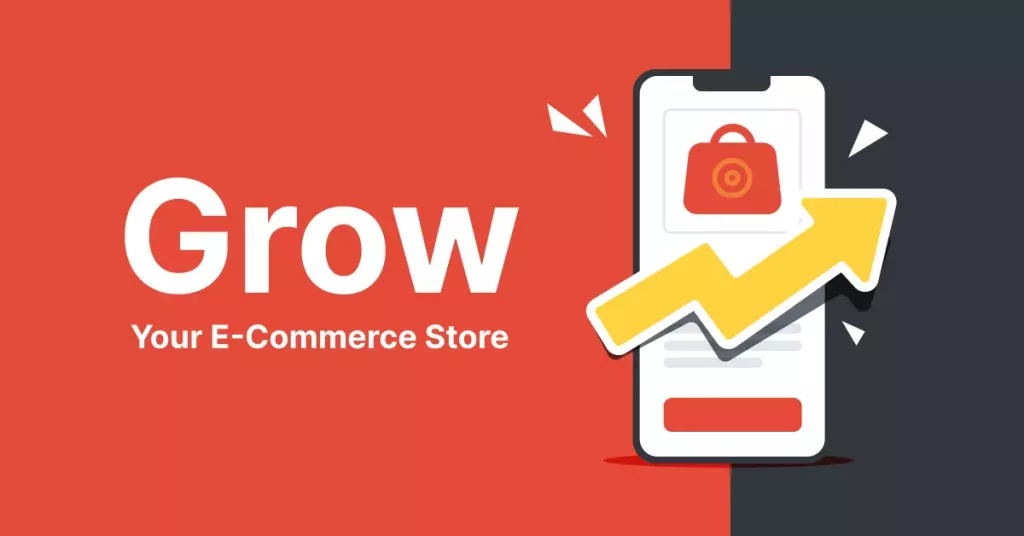Today, it is a rapidly evolving platform for eCommerce. Launching an eCommerce business seems daunting. But that’s not quite true because running a successful eCommerce business isn’t that costly, either. This blog is going to unwrap several strategies that ensure success without hurting the wallet by using one of the most effective platforms with the best practices in the industry, be it Shopify, WooCommerce, or many more.
Introduction to Ecommerce
Well, think of just how huge an eCommerce space is. Of course, entrepreneurs are turning their dreams into reality with the rise of Amazon eCommerce businesses and top Shopify stores. Be it setting up an eCommerce website development service from scratch or looking to revamp one already existing, you have to remember your competition from the biggest eCommerce stores to every little store in between. For that matter, monitoring such trending Shopify stores and their strategies will be good to understand what is relevant for your curve of growth.
How to Apply Social Media Marketing?
Social media marketing is a very inexpensive form of advertising your eCommerce store. Reaching out to your target market with your shopping offers does not require as much money due to expensive ads on Instagram, Facebook, or TikTok.
Content Creation: Share great photos of your products and interact with your users through storytelling. You don’t need to be a professional photographer; a smartphone today is just as good as one.
User-Generated Content: Ask your customers to share their stories about your products. Not only will this make them trust you more, but it will also help create a sense of community around your brand.
Influencer Partnerships: Okay if you are looking out for the people who have been following your brand for a long time. They have got an impassioned audience and can push your products toward the right target audience but all that’s not put with the heavy price tag and hefty influencer fees.
Optimize for SEO
SEO is the traffic coming through search engines by the use of specific keywords on your site that make it appear at the time the keyword is inputted on the search fields. It creates free organic traffic to your site without paying a dime for the placement of paid ads.
Keyword Research: Here, you look for words that are likely to interest your potential target market when you are in search of a type of product or service you have to offer. For this, you may make use of the Google Keyword Planner tool and then so apply such words in your product description, in your blog posts, and meta tags, as well.
Blogging: You can create a blog that would niche into a specific area. This would help with search engine optimization while at the same time establishing your authority in the field. Any further proof that you know what they want will be provided as you blog about topics that your audience will care about, thereby allowing your products to naturally have links back to them.
Leverage Email Marketing
Email marketing still easily ranks as one of the most effective ways of communicating with your audience.
Building a list
Provide opt-in opportunities on your website and social media for subscription to your newsletter. Motivate them by offering them exclusive content or discounts.
Segmentation
Behavioral and preference can be used to understand who fits which category. Mass-customized content will have better engagement and conversion.
Create Quality Content
That requires time to create quality content. It may be blog posts, videos, or infographics about your products.
How-to Guide: Content that advises the best ways of using products becomes very helpful to your customers. On the digital side, it also boosts you to SEO hugely.
Product Videos: Video is an excellent means to generate conversions. A quality video about your product can provide the required confidence for a prospective customer.
Leverage User Reviews and Testimonials
Social proof is a significant influencer for buying in a customer. Through reviews, create a feeling of social proof. Do the following:
Review Requests: Send review requests shortly after the sale has been made. Display the same on your website.
Testimonials Show: Constructive reviews of your products on social media lead to credibility and new visitors buying.
Marketplaces
You can reach a larger audience by selling in marketplaces if you need a quick fix-also known as Amazon and eBay.
Sell Your Ecommerce Business: Chances are, at some point in the future, you will need to sell your eCommerce business if you have created a growing brand. Investors are always and continually looking to invest in readily-established brands, especially within those markets where sales have already been proven to be lucrative.
Buy E-Commerce Business: That is, you can also buy existing eCommerce businesses for sale. It is a strategic approach because you will enter the market with already an established client base and reputation.
Optimize Your Website for Conversions
A user-friendly website is crucial for conversion, the ability to turn visitors into customers.
Mobile Optimization: ensure your website is mobile-friendly because a huge portion of purchases are made on mobile.
Quick Loading Speed: Optimize images and eliminate plugins not used to make faster loading times. A slow site could result in a high bounce rate.
Clear CTAs: Ensure you are using clear and compelling calls to action that would lead the users into purchasing.
Look Around Different Platforms
Want to start your first store? For this, you can look around different platforms like Shopify or WordPress.
Shopify: Starting an online store is pretty straightforward with Shopify. To get inspiration, look at some of the best Shopify sites and learn the best practices.
Woo-Commerce: If you like a little more flexibility in your design and its functions, then a WordPress eCommerce store using Woo commerce is for you. They allow more flexibility in the designs and functions.
Join E-Commerce Communities
But through networking, one could get many useful ideas and support.
Forums and Groups: Join forums and social media groups through which several eCommerce entrepreneurs share their tips and experiences. Know how they did well and where they faced certain setbacks.
Webinars and Workshops: Attend online workshops or webinars that are exclusively eCommerce-specific. They are pretty much free and hold useful information.
Be on Top of Your Analytics
Lastly, monitor your website’s analytics. Knowing exactly what people do on your site can shape your future strategies.
Google Analytics: Free, this tool lets you trace visitor behavior, conversion sales, or any other metric that ends up being important for your business.
Tune Strategies: Depending on your research results, you must change your marketing strategy and concentrate on where your work will find the best services for your target audience.
Conclusion
Expanding your eCommerce store doesn’t have to mean a big investment. Combining an efficient advertisement with the relevance of your website and developing a community for your brand in the context of the competitive eCommerce market means success. If you intend to sell your eCommerce business in the future or grow the business into a successful small business, the following strategies will guide you. Try out various possibilities of each website, learn what websites are most visited, and depend on what is popular in the market today. The best strategy to implement your eCommerce business for sale is through sheer determination and a creative strategy to enable it to compete for a place in the online market.


